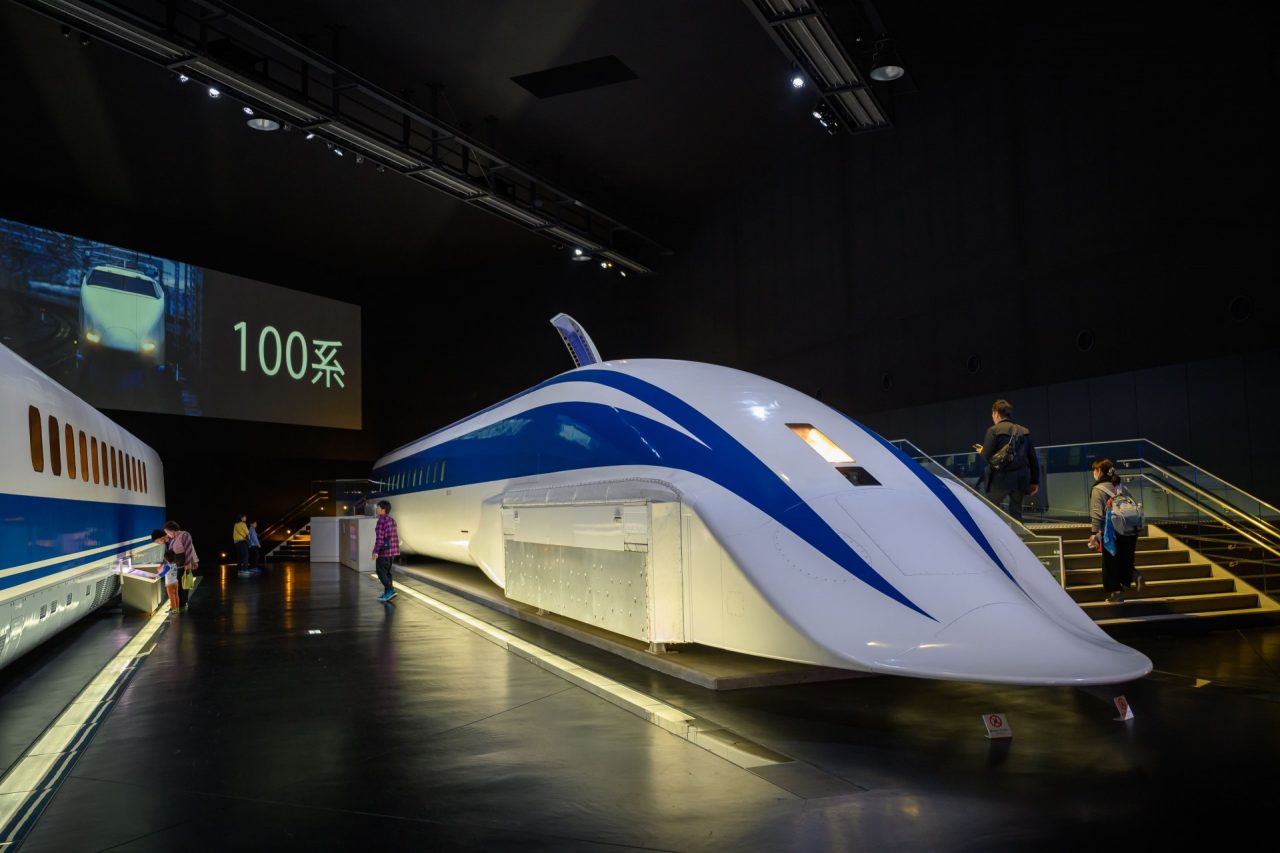From Texas to Japan, investment in high-speed rail is growing around the world. Shortly after the Webuild Group signed a $15 billion (€12.5 billion) contract to build the United States’ first high-speed train – connecting Dallas to Houston – Japan followed suit. Now, the country that brought the world the Shinkansen is moving ahead on the mega Chuo Shinkansen project.
Japan, the first country to inaugurate high-speed rail, now surpassed by China in terms of kilometers, is taking a new gamble. This time it’s on the world’s most ambitious sustainable mobility project: a new magnetic levitation line that will connect Tokyo to Osaka in just 67 minutes at peak speeds of 505 km/h (311 miles/hour).
Beyond its 9 existing Shinkansen lines, Japan is undertaking a complex infrastructural challenge: a $64 billion (€53 billion) train equipped with maglev technology, dividing the country in two from North to South. The line will have an intermediate stop in Nagoya, the capital of Aichi Prefecture, which can be reached from Tokyo in just under 40 minutes.
In recent weeks, the project has been met with a few obstacles from local authorities like the Prefecture of Shizuoca, even though the Japanese national authorities seem determined not to slow construction of the train. Part of the project’s value is symbolic, demonstrating the country’s will to pick itself up after Covid-19 and confirm its prowess in the high-speed transport sector, even as China challenges that status.
The mega-project bringing Japan back to the frontlines
The Chuo Shinkansen project didn’t begin yesterday. The initial idea was backed by Japan Airlines along with Japanese National Railways, before coming under the management of Central Japan Railway Company. The line’s first stamp of government approval came in May 2011, and construction began in 2014.
The first planned connection is between Shinagawa, Tokyo’s business district, and the Nagoya industrial area. The route will cover a total of 286 kilometers (178 miles) in just 40 minutes, using maglev technology that will allow the train to travel at 505 km/h (314 miles/hour). Work on this section has already brought to light the engineering and construction difficulties inherent to the project, particularly given that almost 90% of the entire route will be in tunnels or underground.

This record-breaking infrastructural work was actually born of a prototype. Determined to invest in high-speed rail, Japanese National Railways began experimenting with maglev technology as early as 1964.
After the inauguration of the first Tokaido Shinkansen, an 18.4-kilometer (11.4 mile) test track was created in Yamanashi Prefecture to try out this innovative natural levitation technology, which allowed trains to reach speeds of over 500 kilometers (311 miles) per hour.
In 2013, that track was extended by another 25 kilometers (15.5 miles) along the route that the Chuo Shinkansen will take, according to the plan. Along that same stretch, experiments with the speed of the new train were successfully carried out, beating the world record for speed on manned trains.
The future of the new train, from Nagoya to Osaka
The beautiful and modern city of Nagoya is just the first stop on a line that will reshape Japan by aiding in decongesting the other trains that are currently operating. It will also make an impact by converting some by-car commuters between cities to train travelers.
Given this, the work will not be truly complete until the stretch from Nagoya to Osaka is ready. Osaka is another Japanese megalopolis, as well as a port city and national commercial hub. While the projected end date for work on the line’s first section is 2027, the portion reaching Osaka is not expected to be finished until 2037. To complete the more than 500 kilometers (311 miles) that divide Tokyo and Osaka, a huge engineering and financial feat will be required, although planning has already begun. At this stage, the project is also following all the environmental authorization protocols and checks.
High-speed fever from Japan to the United State
From Japan to Italy, from China to the U.S., high speed rail is increasingly at the center of large-scale infrastructure plans for economic recovery. In Italy, numerous lines are under construction, many of which have been entrusted to Webuild Group. Among these are the high-speed line connecting Genoa and Milan in the North, and the Naples to Bari line in the South.
Even in the United States, after the major Texas announcement, the country seems posed to transform its transport habits, relying less on planes and more on fast trains. Last January, the Federal Railroad Administration published a preliminary study for a future high-speed line connecting Baltimore and Washington D.C. in just 15 minutes. It would be the first section of a line that would link the U.S. capital. to New York City. The discussion in the U.S. is open, and many are looking out at the future from the windows of a high-speed train.

